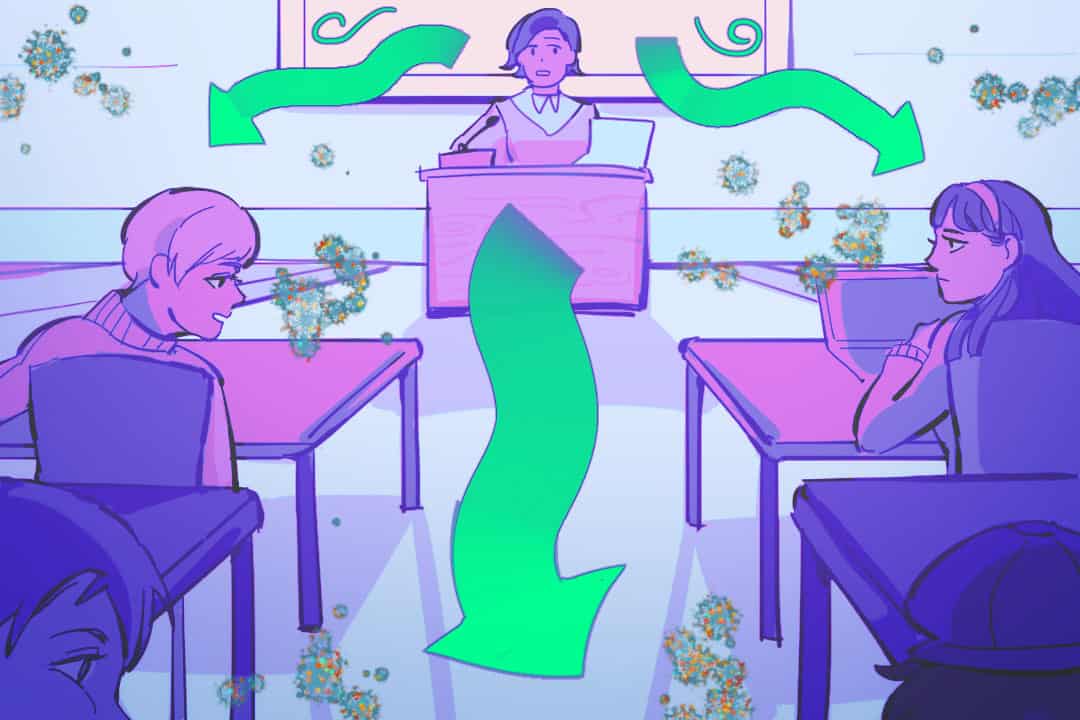As U of T prepares for a mostly in-person fall semester, the university administration has assured students that it has undertaken various improvements to its ventilation systems.
The Public Health Agency of Canada (PHAC) warns that, owing to SARS-CoV-2’s transmission via droplets and aerosols, there is additional risk of transmission in enclosed spaces and indoor settings without physical distancing.
Accordingly, prior to a gradual return to in-person activities in fall 2020, the university conducted a comprehensive review of the air circulation and ventilation systems in its buildings. At that time, the university announced that, in accordance with the recommendations by the PHAC, it had upgraded its Minimum Efficiency Reporting Value (MERV) ventilation filters from MERV-8 to MERV-13 — which are able to capture smaller particles, including viruses.
On August 11, the university updated its COVID-19 heating, ventilation, and air conditioning (HVAC) website for the first time since July 21, 2021. The website includes guidance on COVID-19 preventative measures and the university’s ventilation measures to limit the spread of COVID-19.
As part of its HVAC strategy, the university affirms that it will perform regular reviews of its ventilation systems, replace all system filters with MERV-13 filters, and implement air flushing measures every morning.
Additionally, the website provides a link to the list of buildings across all three campuses indicating the type of filtration system that is currently installed in each building. According to this list, 23 buildings at UTSG do not have central mechanical ventilation.
In the most recent update to the HVAC strategy page, the university wrote that supplemental High Efficiency Particulate Air (HEPA) filters will be added to classrooms that cannot currently reach the target of equivalent six ACH. MERV-13 filters will continue to be the standard in classrooms that do reach that target.
While the administration cites its “sector leading ventilation strategy” in its announcement of a fall semester with mostly in-person activities, student unions have criticized the university’s lack of transparency and voiced concerns over the university’s current HVAC strategy.
From the university
In a written statement to The Varsity on July 18, Ron Saporta — U of T’s chief operating officer, property services and sustainability — provided updates on the status of U of T’s HVAC strategy.
“For the safety of students, staff, faculty and visitors, the University is continuing to flush air pre- and post-occupancy for all central ventilation systems on all three campuses,” wrote Saporta.
He added that, currently, the university carries out “at least six air changes per hour [(ACH)]” in every classroom.
Saporta reiterated that the university has replaced all air filtration systems “with either enhanced MERV-13 filters or the highest filter compatible with existing infrastructure.”
Saporta wrote that students can find updated information about U of T’s HVAC strategy on the HVAC strategy page.
Student unions’ concerns
In a written statement to The Varsity, University of Toronto Students’ Union (UTSU) President Omar Gharbiyeh discussed the union’s concerns with the long delays in updated information on the university’s HVAC strategy.
Gharbiyeh noted that the UTSU has requested that the university provide students with more freedom to choose the mode of learning in which they would feel most comfortable. For example, he listed options for students to physically distance themselves in class, attend classes virtually, and wear masks during in-person classes.
He wrote that the UTSU will continue to advocate for asynchronous, hybrid, or online learning options as a healthy balance between safety, accessibility, and learning quality.
In an email to The Varsity, University of Toronto Mississauga Students’ Union (UTMSU) President Maëlis Barre discussed the union’s ongoing advocacy for transparency from the university on matters concerning student safety.
She referenced the UTMSU and the Scarborough Campus Students’ Union’s (SCSU) safe return campaign, which was launched in winter 2022. The unions demanded that the university guarantee a safe return to in-person learning; they called for the university to replace the currently installed MERV filters with HEPA filters.
In an email to The Varsity, SCSU President Michael Sobowale similarly emphasized the need for increased accommodations this fall.
Sobowale affirmed that the SCSU has advocated for hybrid learning options, mask stations by classroom entrances, and increased access to rapid tests on campus.
“In pasts [sic] meetings, we have brought forward the concerns about the improvement of the HVAC system, in which we asked the university to upgrade MERV filters to HEPA filters — which health officials have stated are best for trapping airborne viruses,” wrote Sobowale.
Sobowale continued, “[In response, the university claimed that] their current system is higher quality than the minimum standard and better in comparison to the systems being used in other post-secondary institutions.”
According to the American Centres for Disease Control and Prevention, HEPA filters are 99.97 per cent efficient at eliminating COVID-19 particles from the air. By comparison, MERV filters are on average 85 per cent efficient at removing COVID-19 particles from the air.


